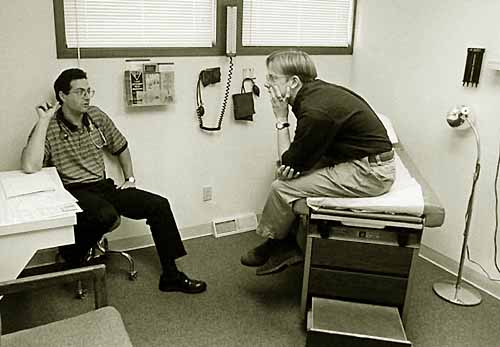|
|
 Photo by David Lee Hartlage |
By late September, tests showed my creatinine jumped to 6.4. The time had come to begin the transplant process.
Dr. Charles Pruchno and I discuss transplant options for the first time on September 23, 1999. Since I had four people willing to donate, he suggested I have the procedure done at Northwestern Memorial Hospital in Chicago. Northwestern is one of the few transplant centers in the country that perform a laparoscopic removal of a kidney from a living donor. This procedure is much less invasive than the standard removal and reduces the donor's recovery time by two-thirds. In short, it's much easier on the donor.
The procedure to implant the kidney is universal -- it makes little difference to the recipient where the transplant is done. As a result of this conversation, I contacted Northwestern and made plans to visit on October 22, 1999, for a workup.
Another option was to wait for my kidneys to fail and go on dialysis. For several reasons, some people do not have the transplant option and must remain on dialysis the rest of their lives.
Another option for those without a live donor is a cadaveric donor, someone who has died and donated their organs. A person can wait for weeks, months or years for a cadaveric kidney. With new advances in medicine, the three-year survival rate of a cadaveric kidney is almost as high as receiving a live donation. The long-term survival rate, however, is much higher for kidneys donated by a living person.
Homepage | About this Site | Site Map | Thanks | Contact Information
Copyright © 2000 johnfmartin.net